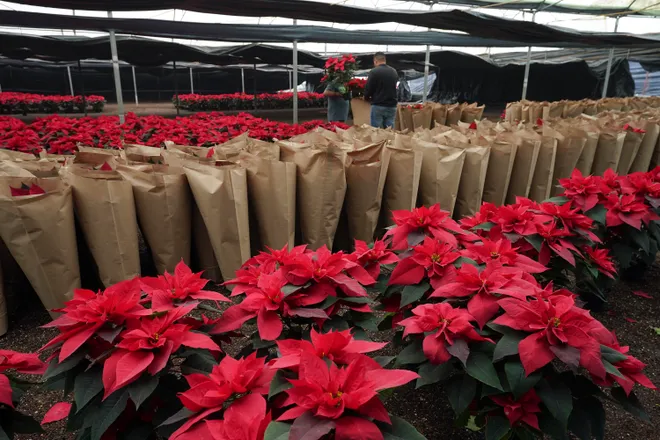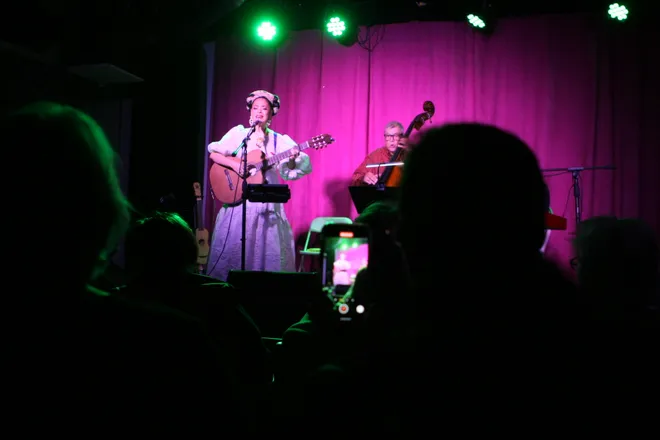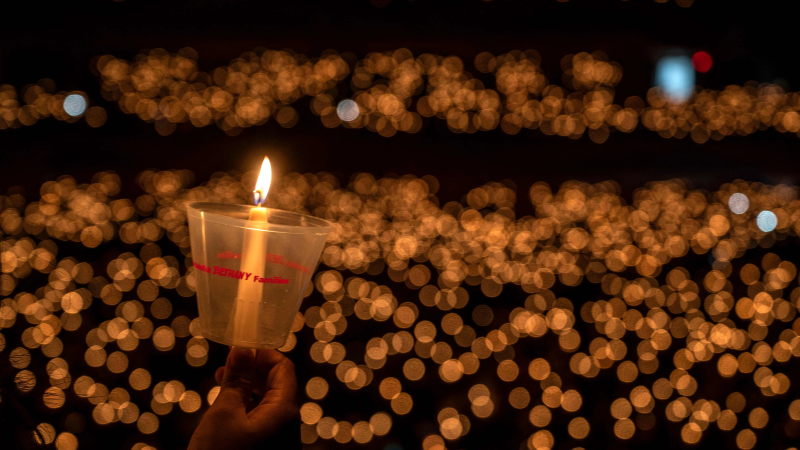What is Nochebuena? What makes the Christmas Eve celebration different for some cultures
For many, Christmas Day marks the main event of the holiday season but for others the real fun starts the night before.
Many Latinx, Hispanic and Filipino communities celebrate Nochebuena on Dec. 24 also known as Christmas Eve. Nochebuena translates to "the good night" and is celebrated in distinct ways by different cultures and religions.
The holiday has long ties to Catholicism and celebrates the night before the birth of Christ.
However, the essence of Nochebuena is the feeling of togetherness, according to Azul Barrientos, a musician from Mexico City now based in San Antonio.
"Beyond the religion, the way that I understand it, it's about love, it's about togetherness, it's about the opportunity for rebirth or reconnection," Barrientos told USA TODAY. "It's almost like that's the end of the cycle for me. Not really New Year's. For me it's Nochebuena."
93-year-old vet missed Christmas cards.Now he's got more than 600, from strangers nationwide.

How is Nochebuena celebrated?
Ahead of Christmas, families often attend Misa de Gallo, a series of nine masses that completes on Nochebuena. Barrientos said the ceremony isn't the typical Sunday Mass session mentioning the distinctive music played. Following church, families and friends gather for a grand feast.
Unlike Christmas, gift giving is not a focal point of Nochebuena. While exchanging gifts are present in some celebrations in the modern day, they're not everywhere.
Barrientos said in central Mexico, she associated gifts with Three Kings Day or Reyes Magos in Spanish instead of Christmas. Instead with Nochebuena, she said games were played where the winner would get to hold baby Jesus. She said without gifts the holiday allowed their family to appreciate the "very simple moments."
"In a lot of families that I know it was about the human connection. Telling stories, telling jokes, even crying together, whatever needed to happen, we're there for it. I certainly appreciated that. As I'm getting older, I appreciate it even more," Barrientos said.
Barrientos also added that music is a common way to celebrate the holiday. On Dec. 16 and 17, she performed at the Esperanza Peace and Justice Center in San Antonio for their annual Nochebuena event.

How long does las posadas last?
In some towns and villages across Mexico, people carry out traditional Christmas parties called Posadas Navideñas for nine days from Dec. 16th to Dec. 24.
Dr. Timothy Matovina, a theology professor at the University of Notre Dame, said the tradition honors the Virgin Mary and Joseph's journey to Bethlehem where Jesus Christ was born.
"When when they're there, Jesus is born in a stable. So Posada is Mary and Joseph wandering around Bethlehem trying to find a place that will let them in so Christ can be born there," Matovina said.
He added some groups go around neighborhoods house to house singing the "Litany Para Pedir Posada" song until someone lets them into their home where a fiesta is held.
'Cold moon' coming soon:December 2023 full moon will rise soon after Christmas
Recreating the scene of Jesus's birth at home or church
Matovina said families or churches often set up ornate and beautiful decorations to represent the scene of Jesus's birth which is referred to as the "acostada de nino" or "laying of the child" in English.
He said on Nochebuena, typically the youngest family member will place the image of baby Jesus into an empty crib and begin prayer.
"That officially begins the Christmas celebration in the household. They might have more prayers and usually there's going to be some fiesta. They might have exchange of gifts," Matovina said. "When you say Nochebuena in someone's home, that's probably the most common thing you're going to find: A solemn laying of the Christ child in the manger."
What foods are associated with Nochebuena?
Tamales, adobo, lechón and pancit are common dishes at many Nochebuena celebrations.
Barrientos said some of her favorite meals that she associates with the holiday are Romeritos, a Mexican seepweed boiled and dipped in a mole sauce, and bacalao, a salted cod dish with banana peppers.
"I grew up in a very humble home. So we just kind of had the basics and to me that was a feast. To this day that is a feast," she added.
Nochebuena isn't just a Latinx holiday
Nochebuena transcends Latinx culture as it's also been celebrated in the Philippines for centuries. Roughly 86% of the Philippines' estimated 109 million population identifies as Roman Catholic, according to Asia Society.
"That's why (Nochebuena) is still seen as part of Filipino tradition; it's because it is deeply rooted in that past," James Zarsadiaz, associate professor and director of the Yuchengco Philippine Studies Program at the University of San Francisco told USA TODAY in 2021. "Even if you're not necessarily Catholic, Filipinos understand what it means and know what the festivities are all about."
Contributing: Jordan Mendoza

Disclaimer: The copyright of this article belongs to the original author. Reposting this article is solely for the purpose of information dissemination and does not constitute any investment advice. If there is any infringement, please contact us immediately. We will make corrections or deletions as necessary. Thank you.





